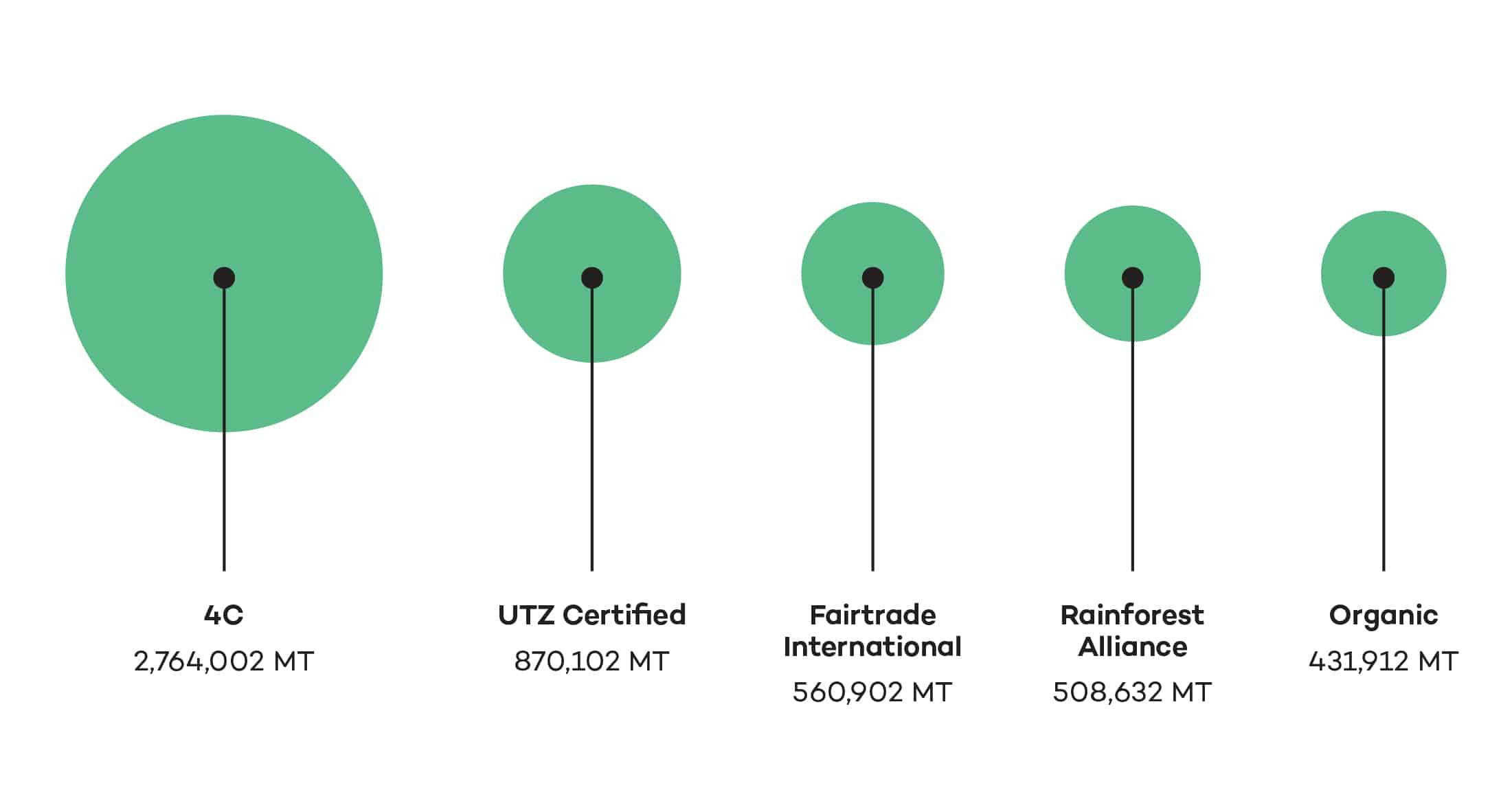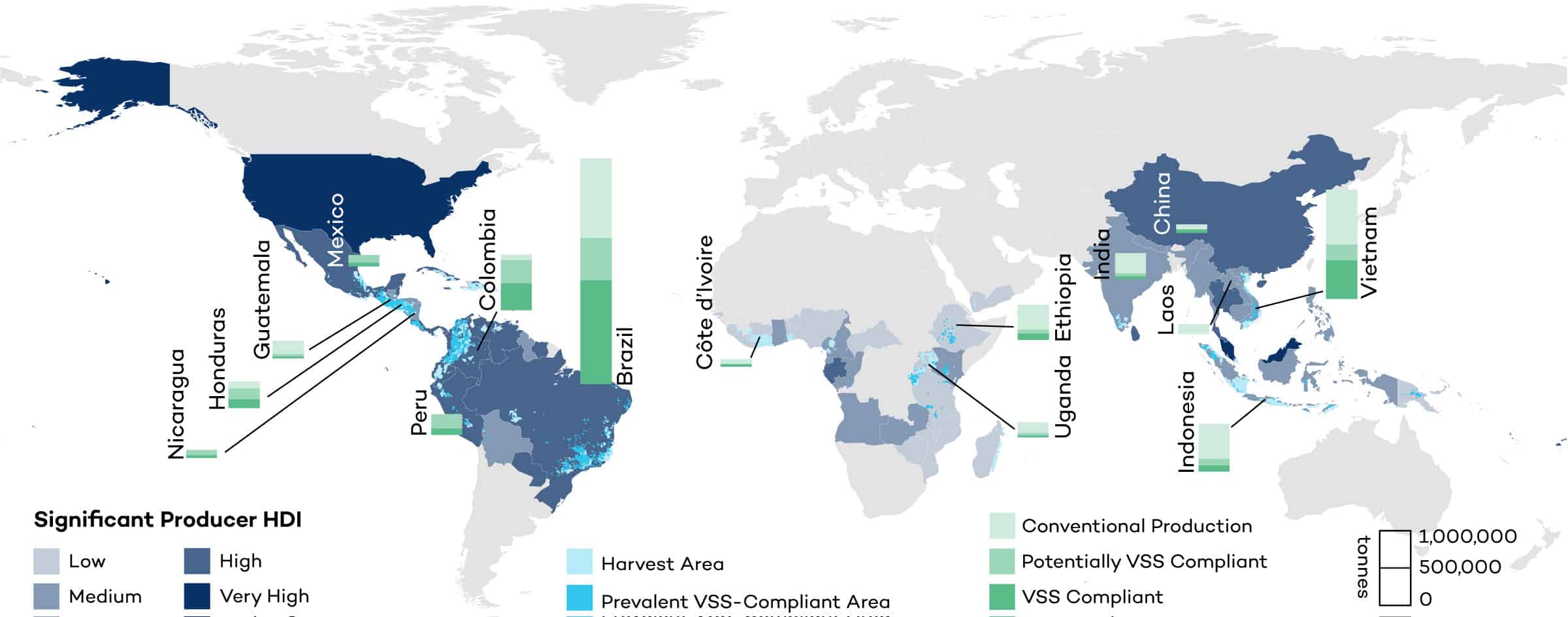Coffee Coverage
Voluntary sustainability standards (VSS) emerged in the coffee sector over 30 years ago, with non-governmental organizations, private sector actors and other industry stakeholders looking to provide roasters, retailers and consumers with the ability to distinguish between conventionally produced coffee and its more sustainable coffee equivalent.
Today, VSS-compliant coffee production is increasing at a higher rate than the overall sector, with significant growth coming from least-developed countries.
The coffee sector’s projected growth is fuelled by increasing demand from producing countries and emerging economies traditionally not among major coffee importers, including Brazil, Indonesia and China, and the expansion of retail options, such as ready-to-drink coffee and pods or capsules.
However, the growth of demand for VSS-compliant coffee is concentrated mainly in traditional markets such as Europe and the United States and remains lower than supply. This supply–demand imbalance can limit the market growth potential of VSS-compliant coffee and needs to be addressed by value chain actors to benefit from the opportunities that stem from increasing coffee demand from producing and emerging countries.
Key Takeaways
125 million jobs
The coffee sector provides jobs for about 125 million people around the world. This includes employing people on 12.5 million farms, up to 80 percent of which are smallholder farms primarily in developing countries.
USD 19 billion
Coffee is one of the most traded agricultural commodities in the world. In 2017, 70 percent of total coffee production was exported, worth USD 19 billion.
3 million metric tonnes
In 2016, at least 3 million metric tonnes of coffee produced was VSS-compliant, valued at USD 7.2 billion. Seventy percent of this coffee comes from Latin America, with substantial numbers produced in Asia and Africa as well.
VSS production up by 24 per cent
Between 2008 and 2016, conventional production decreased by 8 percent, while VSS production increased by 24 percent.
)
VSS-compliant coffee accounted for at least 34 per cent of total coffee production in 2016
In 2016, 34.5 percent of the market was made up of VSS-compliant coffee, while coffee that was potentially VSS-compliant represented 21.4 per cent, and conventional coffee production accounted for 44 percent of the market.
)
Good progress toward sourcing more sustainable coffee
The 10 largest coffee roasting companies purchased 3.31 million metric tonnes of coffee in 2016, accounting for 35 percent of total global coffee sourcing. From this total, 1.14 million metric tonnes were VSS- and corporate-initiative-compliant coffee, which refers to sustainable coffee production programs established by private companies rather than by independent third parties. An additional 0.3 million metric tonnes of sustainable coffee could be sourced by 2025.
)
Standard-compliant coffee production volumes in 2016
VSS-compliant coffee experienced a compound annual growth rate of about 24 percent from 2008 to 2016, accounting for at least 34 percent of overall coffee production. 4C, UTZ Certified, Rainforest Alliance, Fairtrade and Organic are the main VSSs in the coffee sector, when ranked by production size.
)
Distribution of coffee production in the top fifteen producing countries in 2016
Download high resolution version of map at bit.ly/ssi-coffee.

